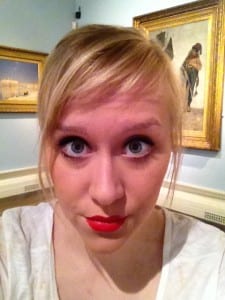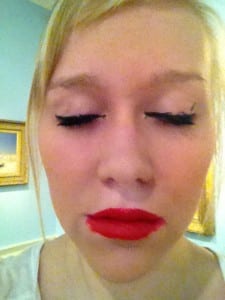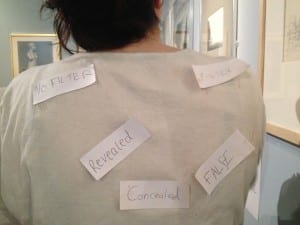In our last rehearsal we put all our elements together and tried out our idea in full. Dressed in white and with our makeup and drawing pad ready we started a trial hour long performance. As we had discussed in our last rehearsal, our application of the makeup changed over time as Tom’s drawings became more and more frantic. At the start our makeup is reflective of our usual make up routine.
However, as the drawings become more frantic, so do our movements. The application becomes messier and quicker until eventually we apply without even looking at a mirror. This is turn creates a more grotesque image as the lipstick becomes smudged and our eyes are covered with messy eyeliner and mascara. This process in addition to the scattering of used makeup wipes will hopefully reinforce the concept of our piece; that masking is not necessarily perfection whether in art or society. The connections between the paintings and society (or indeed women) as art, is something we really want to express through this process and hope it will be received and understood by the audience. To add to this performance we also tried our new idea which was discussed last week. After each application and removal of makeup we would write a word describing ourselves with and without make up and stick it on each other. Words included:
-filter -no filter
-concealed -revealed
-fake -real
-beauty -different
-illusion -truth
This progressive element will mean that by the end of the performance, we will be covered with words expressing the views of objects and women with and without a mask. The fact that the drawing of Venus de Milo has been incorporated into our performance gives our actions stronger meaning for we are strongly questioning what beauty is, whether that be in art or in women.



